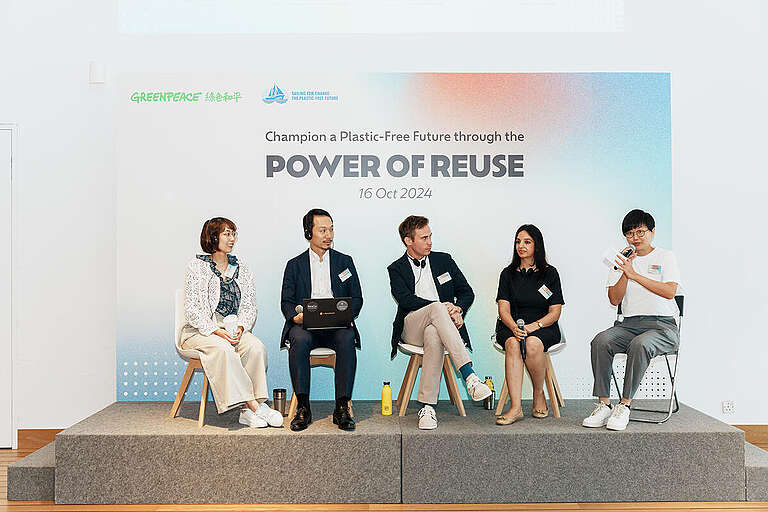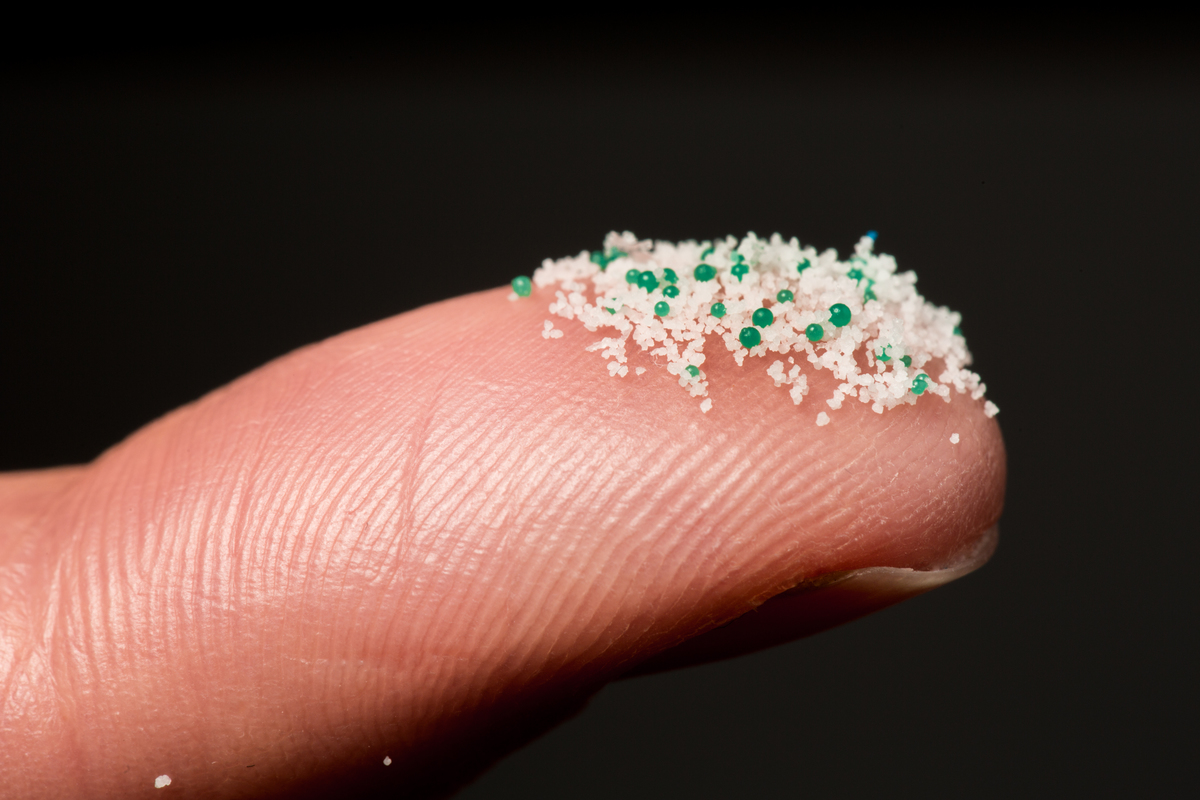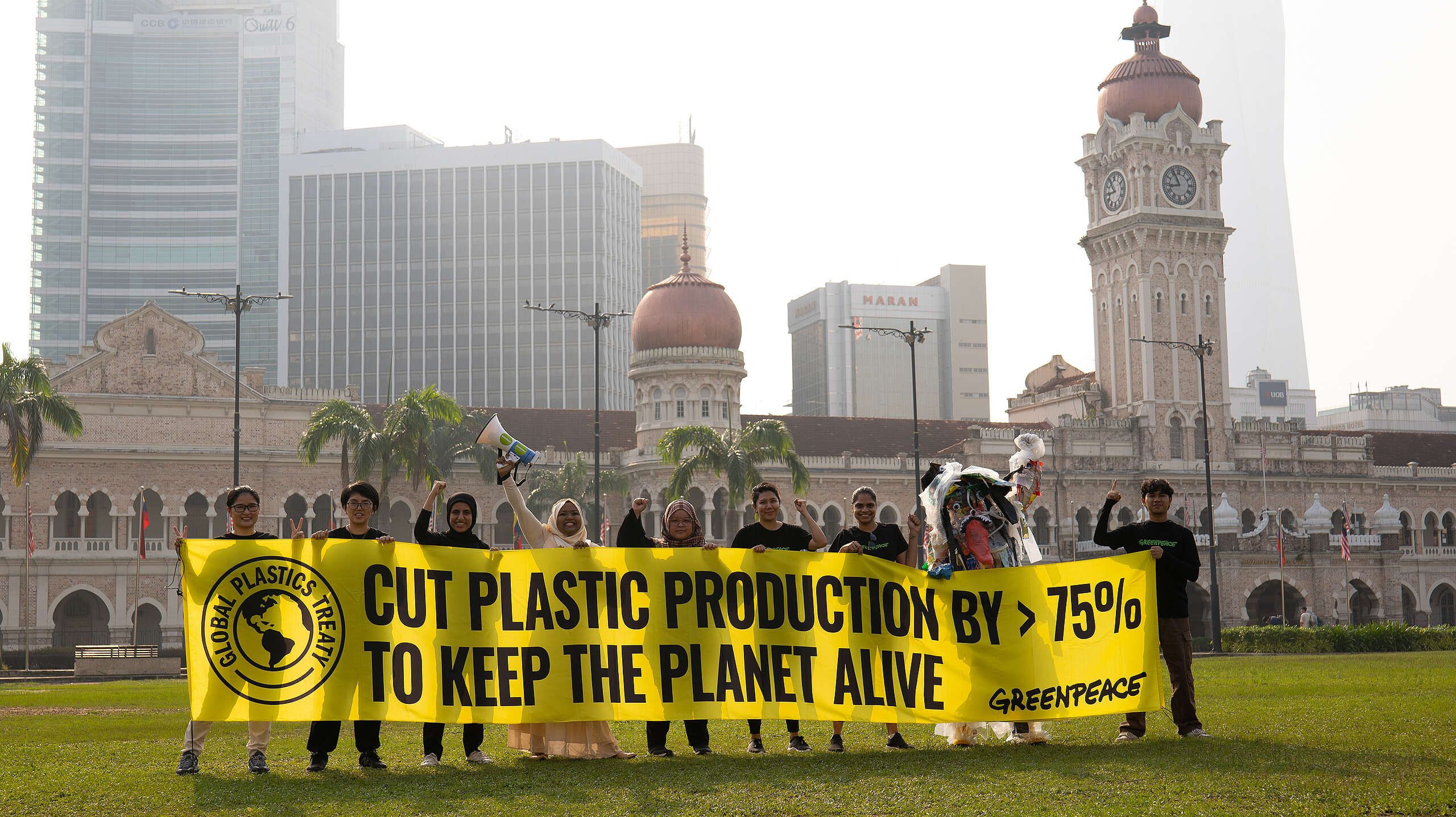A deep dive into the aftermath of imported plastic waste
Illegal, un-recyclable imported plastic waste flooded our shores in 2018 – drowning out the voices and health of communities affected by it, as well as the health of our environment.
Reopening investigations into the imported plastic waste issue, what we found proved alarming.
These findings were included in our new report, and the title says it all.
The Recycling Myth 2.0: The Toxic After-Effects of Imported Plastic Waste in Malaysia
The report released this year is a result of months of in-depth investigations in 2019, along with lab analysis of water and soil sampling collected during the time.
It outlines several chemicals present in the form of plastic waste residue (shredded and burnt plastic) at four areas.
Namely unregulated dumpsites and plastic recycling facilities at Pulau Indah, Sri Cheeding and Kapar in Selangor state; as well as Sungai Muda in the state of Kedah.
Some of these chemicals had even leaked into a fish pond!
These hazardous chemicals are but a few of the substances we found left behind by the importation of plastic waste.
An Overview
Plastic waste flooded our shores in 2018, imported from several developed countries.
Illegal. Un-recyclable. Single-use. Plastic waste.
These are some of the words to describe what was imported.
Alone, these keywords don’t paint a pretty picture.
Together however, they spell out much worse not only for the image of our environment. But even more so for the health of our environment and the people living in it.
Malaysia became a hub for plastic pollution, as mountains made up of plastic waste appeared in a number of areas within the Selangor and Kedah state.
The local government took positive steps to shut down illegal plastic recyclers, clear up and eventually send back imported plastic waste to the countries of origin in 2019 and 2020.
Despite this, the aftermath of the imported plastic waste trade has left an indelible mark that is more difficult to erase.
What we found
In the first Recycling Myth report, we studied the physical problems of plastic.
From its importation from developed countries only to be dumped in unregulated dumpsites and at times waterways, to its effects on the communities living with the burning of plastics near these sites.
“Clearly when it’s burned we know that the chemicals and particles can be released into the air, though it wasn’t part of this study, we know from other studies they can cause health problems through breathing in the same way other particulars can,” explained Greenpeace Research Laboratories senior scientist Dr. Kevin Brigden.
In The Recycling Myth 2.0, we wanted to show with well-researched studies that in addition to the physical or visual problem of plastic pollution, there are chemicals that come with the plastic.
“With vast quantities of plastic being brought into a country, those plastics bring with them a range of hazardous chemicals,” said Brigden, explaining that many of those chemicals are toxic and highly persistent.
Now it gets a little bit more technical from here on out.
Evidence of several plastic-related chemicals, heavy metals and metalloids were found at the sites affected by the imported plastic waste trade.
Plastic materials in themselves contain a wide range of hazardous chemicals – for example, brightly coloured red, yellow and orange plastics often contain cadmium.
However the improper treatment of plastic materials through burning or shredding (which occurred at the sites investigated) can mobilise some of the metals from the plastic, enabling them to spread into the environment.
It can also result in the creation of new hazardous chemicals as well in addition to its mobilisation – some of which are now regulated in many countries around the world.
“Once they’re released into the environment, they’re going to stay there for a very long time. And these things aren’t as visible, and that’s why we wanted to do this investigation – to make these more visible,” Brigden added.
Here is a list of the chemicals, heavy metals and metalloids found at those sites alongside its possible effects on health:-
- Cadmium: Can accumulate in the body over time, with long term exposure causing damage to the kidneys and bones
- Lead: Can accumulate in the body over time. Irreversible damage to the nervous system, including its development in children, also affects the blood system, kidneys and reproduction
- Antimony: Can cause a heart attack (myocardial effects) and gastrointestinal effects, potentiate pneumoconiosis when inhaled
- Polycyclic Aromatic Hydrocarbons (PAH): Can cause neurodegenerative diseases (Alzheimer’s disease and Parkinson’s disease); lung cancer; cardiovascular disease risk and hypertension; disruption of reproductive cycles and interference with cardiac conduction of marine life
- Triphenylphosphine Oxide (TPPO): The degradation products of the compound could be toxic to aquatic organisms; TPPO is a neurotoxin to golden apple snails
- Nickel: Possible gastrointestinal and cardiac effects.
- Volatile Organic Compounds (VOC): Some VOC are carcinogenic (benzene)
There are a lot of fancy chemical and medical terms.
The TL;DR version is this: These are dangerous chemicals that have been mobilised into the environment due to improper treatment. Traces of these chemicals can, and in some cases, have found their way into our soil some nearby water streams.
A case study done by International Pollutants Elimination Network (IPEN) on chicken eggs in Indonesia has also shown that once mobilised, plastic can affect our food supply, thereby affecting our health.
It doesn’t end with sending back the waste to countries of origin.
We need to demand governments internationally to safeguard not only our environment, but also our health.
Overall, we are pushing for a global agreement to stop the flood of plastic waste.
And locally, we are pushing for:
- An inclusive rehabilitation action plan
- The need to revisit and enhance the Freedom of Information Act for transparency
- The need to amend or replace the Environmental Quality Act 1974 with an Environmental Protection Law
Join us to call for a #BetterNormal through a #GreenRecovery!
Download the full The Recycling Myth 2.0 report here.
Read the full technical report here.




Discussion
There are so many illegal plastic factories operating in West Port and Telok Gong right now with no licenses and no proper waste treatment equipment. How may I contact GreenPeace
Thank you for getting in touch with us Zack. Please do contact us via email at [email protected]